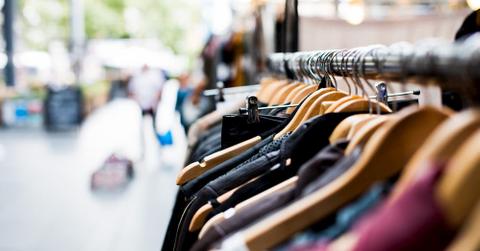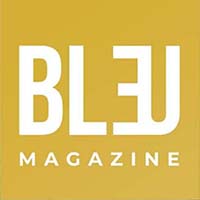
My Gap Year: Out of Fashion
Damien Nunes, a former employee at Gap, details his experience of being let-go during the Coronavirus pandemic and his fashion career.
By Damien NunesSept. 29 2020, Published 4:23 p.m. ET
I left the zoom meeting and closed my laptop, exhaling as I looked out the window. Spring had arrived in New York, a bizarre contrast to the tension still gripping a city coping with the plateauing Coronavirus. Inside, the mood had become downright somber. Sitting at my dining table and makeshift office of the past two months, I was now grasping what just happened: I had been laid off by my employer of nine years.
Having survived several company reorganizations, or re-orgs as they are nicknamed, I’d had an opportunity to imagine how this moment might feel and when it arrived the emotions were mixed. There was, of course, the shock, shame and embarrassment of a forced separation like this, akin to being brought out of an induced coma to be told you’ve been the unconscious one in a one-sided conscious uncoupling. This was immediately followed by the realization that I, now rounding out my 30s, would soon be living in a rented Greenwich Village apartment with insufficient savings and no salary, livelihood, or health insurance during a global pandemic. As they added up, these facts became stressful, to say the least.
There was another feeling, though, that I hadn’t anticipated: Freedom. Like so many others in this country, I was now out of the game, a free agent. As days passed, I began to wonder if this was an opportunity, in the solitude of lockdown, for reflection and reevaluation before attempting the next step. I hadn’t faced a moment like this since beginning my fashion industry career almost two decades earlier, falling in hard and never looking back. While at Parsons, I’d started at Conde Nast’s Vanity Fairmagazine first interning then freelance assisting in the fashion closet, remaining for two years before moving on to be a Fashion Editor atDetails and later GQ. These years would be the last of Conde Nast’s famed golden age as the publisher began adapting to a burgeoning digital-first world.
In 2011, after nine years in editorial, I accepted a role identifying trends and creating design concepts for Gap. This unique and creative job allowed me to travel to places like London, Paris, Tokyo, and Stockholm looking for inspiration. Last fall I was asked to oversee partnerships and collaborations for the brand as well as accessories design, a multifaceted job that seemed like an exciting step forward for all involved. Then COVID-19 changed everything.
Now jobless in a frozen economy, while worried for the future I felt fortunate to be healthy and have a brief moment to refocus. I would try not to waste it. So I begin meditating and doing yoga, virtually volunteering, writing, reading, and taking some online courses. I’d also ruminate on a question that had been burning in my mind for some time when it came to continuing a career in fashion: In an over-polluted and superficial world, one now confronting a catastrophic health crisis, did I really want to spend time and energy focusing on clothes?
A few weeks later George Floyd was killed in Minneapolis by police officer Derek Chauvin, a murder broadcast in its 8 minute and 46 second entirety to a world still enraged by the deaths of Ahmaud Arbery, Breonna Taylor, and so many people of color before them. Suddenly, the conversation shifted away from the virus as citizens around the globe rose up, again and most powerfully, in the name of Black lives. Society, it seemed, was going through its own paradigm-shifting inflection moment, perhaps finally awakening for good to the systemic inequities caused by racism for time immemorial.
Outside our doors, despite the dangers presented by the virus, protest marches happened from day to night when helicopters overhead captured scenes of rioting, further bringing into question the value of stuff compared to Human Lives. I found myself joining the fight on social media and —with some virus-related trepidation— attending protests downtown. As weeks went by and the protests continued, there seemed to be a reckoning happening within the fashion and publishing industries as well.
It’s no secret that fashion has navigated its own issues of racism, appropriation and inequality. In recent years the industry has undertaken efforts to tackle some of these problems to varying degrees of success. Buzzwords like “inclusivity” and “belonging” have gained popularity as companies try to increase and sustain diversity through hiring and by creating more woke work environments. Brands tout product offerings to fit a wider range of body types and skin tones as advertising and editorial shoots strive to feature a more representational mix of talent. Limited-edition collaborations with notable people of color are sought out by executives to create buzz and capture certain segments of the market in an “authentic” way. At Gap, I had a hand in a collaboration with the designerTelfar, until the project was postponed and ultimately canceled around the time of my departure from the company. In tough times, when purse strings are tightened, it’s often the most forward-thinking projects that are deemed too “niche” and deprioritized or altogether scrapped.
Now, BLM’s powerful resurgence was forcing fashion companies to answer to inequities within their offices, from the top down. Employees finally felt empowered to speak out about workplace disparities in treatment, pay and mobility. Many industry leaders issued statements acknowledging past short-comings, promising to do better. Others resigned, unable to recover from their current or past offenses which were now exposed to the purchasing public.
As a mixed-race Latinx American looking back on my own experience, I’ve encountered few instances of the blatant workplace racism many people of color face on a regular basis. On the contrary, in an industry that can deem the indeterminate to be “exotic,” I undoubtedly at times benefited from my racial and ethnic ambiguity. Even so, I now wonder whether there has been the presence another insidious form of racism, one difficult to outmaneuver because it’s woven into the fabric of our capitalist society and masked by the perception of fashion as frivolous by some and fabulous by others. Given my humble beginnings, I’ve always felt lucky to have had the shiny experiences a career in fashion granted — a notion often reinforced by others, including bosses.
This idea that a person like me should be grateful to be able to do the work (and yes it’s work) has at times been at the expense of healthy self-confidence, self-care and self-promotion. Also, while things are slowly changing, many of those holding power in the industry remain white, straight, and cis with a certain level of pedigree and education. Together, these factors have contributed to a sense that no matter how hard I’ve worked on my journey up the corporate ladder, the ceiling was always coming closer. As a mid-level creative, I’d been allowed be myself and play in the sandbox with other creatives but when it came to attaining that seat at the table where new ideas are sanctioned into real change, I sometimes wondered if there would be a chair for someone like me, given who I’d always seen in the room.
Today I hope I’ve done my part to support the BIPOC community, both in the workplace and products I’ve helped to produce, a priority going forward wherever I may land. If the fashion industry is to be worthy of any of our time and energy in this changed world, it must do more than be fabulous and make clothes. It needs to harness its power to influence and lead change from the inside out and from top to bottom. The industry and those in it need to demand that it represent, respect and inspire all of us, always. It needs talented people of every background, color, ethnicity, shape, size, gender, and sexual orientation, not only to be given space in ads or hype collaborations, but to shape the industry and therefore the world as equally compensated CEO’s, editors-in-chief, creative directors, designers, innovators, photographers, storytellers, muses, and assistants.
This planet, after all, has enough stuff.
My Gap Year: Out of Fashion from Bleu Magazine Issue 68, written by Damien Nunes.

